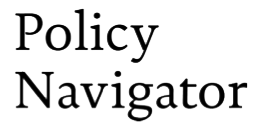- Share on LinkedIn
- Share on Bluesky
- Share on X
- Share by email
-
Link
Copy link
Workhouses and the Poor Law Amendment Act 1834
An investigation into the administration of the Poor Laws
The Royal Commission into the Operation of Poor Laws, chaired by the Bishop of London, launched an investigation into the administration of the Poor Laws in 1832.
The commission reported back in March 1834, concluding that poverty was being perpetuated by the provision of Poor Law relief. This conclusion led the commission to recommend that all able-bodied people and their families should stop receiving relief.
The 'new Poor Law'
The recommendations of the commission formed the basis of the Poor Law Amendment Act 1834, dubbed the 'new Poor Law', which overhauled the system of providing support to the poor in August 1834. The Act grouped local parishes into Poor Law unions, under 600 locally elected Boards of Guardians. Each of those boards had its own workhouse.
The boards were controlled by the Poor Law Commission (established by the 1601 Act), which was responsible for administering the new system of providing relief to the poor (including the administration of the workhouse and workhouse infirmary).
Some larger parishes in London continued previous administrative arrangements, until the Metropolitan Poor Act 1867 required them to come under the control of Boards of Guardians.
'Outdoor relief' (assistance provided outside of a workhouse) was withdrawn unless a person was unable to work due to old age or 'infirmity'. Those who were 'able-bodied' but unemployed could not draw state support unless they entered a workhouse, where they earned their keep. Workhouses also housed the sick, 'mentally ill', unmarried mothers, the elderly and 'the infirm'.
A punitive approach
The government's intention was to make the experience of being in a workhouse worse than the experiences of the poorest labourers outside of the workhouse. This policy was to become known as the principle of 'less eligibility'.
This was a punitive approach, borne out of a desire to deter idleness and curb spending relief on 'able-bodied' people. The Act itself suggests that 'the relief of the able-bodied and their families is in many places administered in modes productive of evil in other respects...'
Experiences in workhouses were extremely unpleasant, with inhabitants forced to do hard labour, live in poor conditions and receive poor nutrition. People in workhouses were attended by workhouse medical officers and nursed by unqualified inmates.
Despite being for the ‘able-bodied’, in 1866 21,000 sick and aged inmates in London workhouses were being nursed and cared for by 142 non-pauper nurses. Very few of them had received formal training.
All of these changes began under a Whig administration, but ultimately the legislation was taken forward by a minority Tory government. It was said that the Whig government already had plans in mind and that the commission provided the evidence for their proposals.
Later developments
The Poor Law Commission was replaced by the Poor Law Board in 1847, with the intention of improving accountability to Parliament. Workhouses and Boards of Guardians were abolished in 1930 by the Local Government Act 1929, and their powers and responsibilities were passed to local and national government bodies.
The Workhouse: The story of an institution.
The 1834 Poor Law Amendment Act.
Workhouses.org; 1834.
Living Heritage: Reforming society in the 19th century.
Poor Law Reform.
parliament.uk; nd.
Theobald W.
The Poor Law Amendment Act: with a commentary on the powers of the commissioners, and a general introductory view, showing how the act affects the Law of Relief, Settlement, Removals and Appeals.
London: Sweet, Stevens and Son; 1834.
Austin RCA.
The Metropolitan Poor Act, 1867: with introduction, notes, commentary and index.
South Carolina: Nabu Press; 2017.

